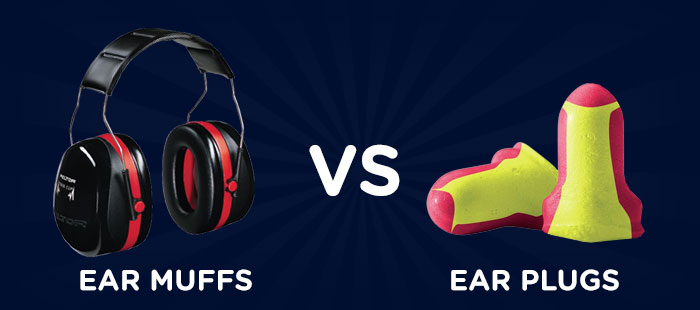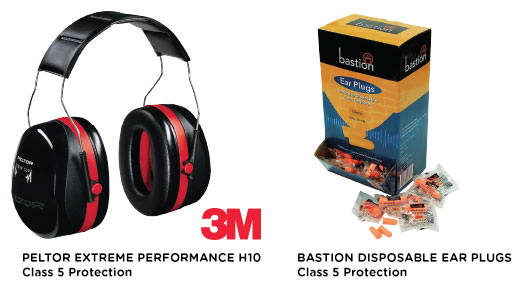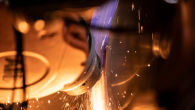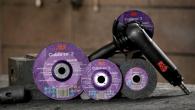
Prolonged exposure to high levels of noise can cause permanent hearing loss. Fortunately, out of all the many potential workplace injuries, hearing impairment is one of the most preventable with the use of appropriate PPE, such as earmuffs and earplugs. But, which hearing protection is best?
Firstly, let’s break down what harmful noise actually is.
The Australian Standard AS/NZS 1270:2002: Acoustics – Hearing protectors rates noise levels into 5 classes, with Class 1 being the lowest level of protection and Class 5 being the highest level.
The system is based on the SLC80 (Sound Level Conversion valid for 80 per cent of the wearers) rating, which calculates the difference between the sound level of the workplace in which the ear protection is worn and the sound level reaching the wearer’s ear canals.
|
Class |
SLC80dB |
Recommended Noise Range (dB) |
|
1 |
10 – 13 |
Less than 90 |
|
2 |
14 – 17 |
90 – 95 |
|
3 |
18 – 21 |
95 – 100 |
|
4 |
22 – 25 |
100 – 105 |
|
5 |
26 – 36 |
105 – 140 |
For example, the noise level in a workplace was 105dB (as average over an 8 hour shift). The target ‘in-ear’ noise level is 80dB. The minimum SLC80 required for a hearing protector in this workplace would be: SLC80 rating = 105dB - 80dB = 25, therefore the hearing protection should be Level 4/5.
How much noise is too much?
85 Decibels (dB) – is considered the base level where hearing protection is required.
90dB - 8 hour average exposure limit.
100dB - exposures longer than 15 minutes are not recommended.
110dB - regular exposure of more than 1 minute risks permanent hearing loss.
What are the noise levels for common construction tools?
| Tool | Noise Level (dB) | Recommended Cl;ass |
| Orbital Sander | 90dB | 2 |
| Table Saw | 93dB | 2 |
| Belt Sander | 94dB | 2/3 |
| Router | 95dB | 3 |
| Metal Shear | 98dB | 3/4 |
| Hand Drill | 99dB | 3/4 |
| Circular Saw | 101dB | 4 |
| Tile Saw | 102dB | 4 |
| Impact Wrench | 103dB | 4/5 |
| Miter Saw | 103dB | 4/5 |
| Chop Saw | 106dB | 5 |
| Chain Saw | 109dB | 5 |
| Hammer Drill | 114dB | 5 |
The above is to be used as a guide only.
 Shop our range of hearing protection
Shop our range of hearing protection
What are the main types and benefits of ear plugs and ear muffs?
Hearing protection devices decrease the intensity of sound that reaches the eardrum. They come in two forms: earplugs and earmuffs.
Earplugs are small foam inserts that fit into the outer ear canal. To be effective they must totally block the ear canal with an airtight seal.
They are available in a variety of shapes and sizes to fit individual ear canals and can be corded too for convenience.
Now the benefits of ear plugs:
The main benefit of earplugs is the level of protection they provide. Because they fit directly into the ear canal, ear plugs offer greater noise protection than ear muffs. They are also very light and easy to carry, and because ear plugs fit comfortably into the ear canal, they are easy to wear with other types of PPE, such as helmets and safety glasses.
On the negative side, ear plugs are sometimes hard to fit in the ear. If done incorrectly, the ear plug can slip out of the ear canal and not protect the wearer as well as it should. Also, they are impractical for those who work in very dirty or greasy environments, as they will not be able to be reinserted hygienically.
One of the main advantages of ear muffs is that they are easy to fit. Most models are designed as a one-size-fits-all solution, and can be easily adjusted to fit on just about any head. They are ideal for intermittent use, and especially suitable for construction. Also, their size makes them easy to find in the ute tray!
However, ear muffs aren’t as effective as well fitted ear plug, and they can lose some of their protection when worn with other types of PPE, particularly safety glasses.
Importantly, audio headphones for phones and other personal music devices must never be used as a substitute for approved hearing PPE. Not only do they provide no protection at all they actually boost the level of outside noise and contribute to damaging hearing.
So, which is the best at protecting your hearing?
It depends on the needs of the worker and the level of workplace noise. Ear plugs fit directly into the ear canal and offer maximum protection from excessive noise. Their only downside is the fact that they may not be easy to fit properly, and they are so small that they can easily be lost. On the other hand, even though ear muffs are perfect in most situations, they do not offer as much protection and can be horrible to wear in hot conditions. Whichever type of hearing protection is chosen, the user should always pay attention to the decibel and class ratings.
Once you know the type of hearing protection you need, browse our massive range of earplugs and ear muffs. Any more questions about hearing protection? Get in contact with us today.



